
Concept explainers
a.
Use the regression feature of a graphing utility to find a model of the form
a.
Answer to Problem 48E
Explanation of Solution
Given information:
The table shows the measurements (in feet) of a lot bounded by a stream and two straight roads that meet at right angles (see figure).
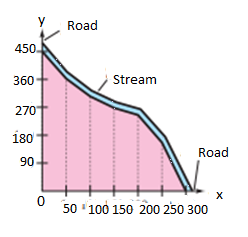
Use the regression feature of a graphing utility to find a model of the form
Calculation:
Consider the following table
To determine the regresion model using the graphing utility
Press stat, the display will be
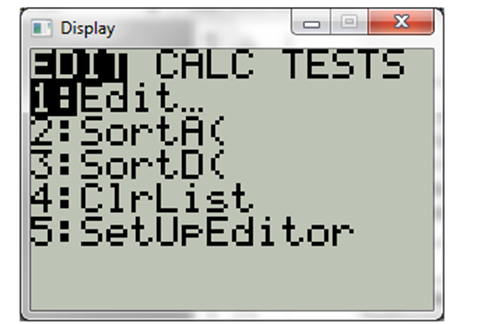
Now select edit, the display will be
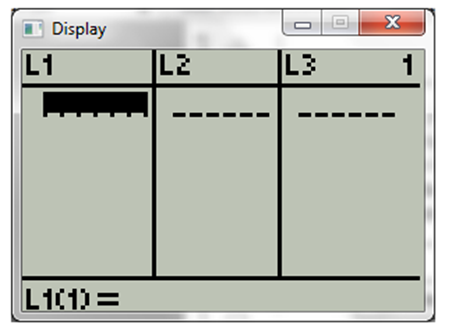
Now provide the data under the columns of list 1 and list 2.
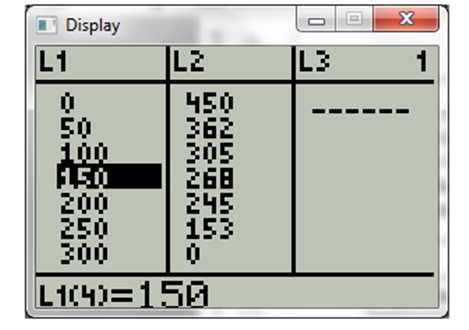
Now press stat and choose calc, the display will be
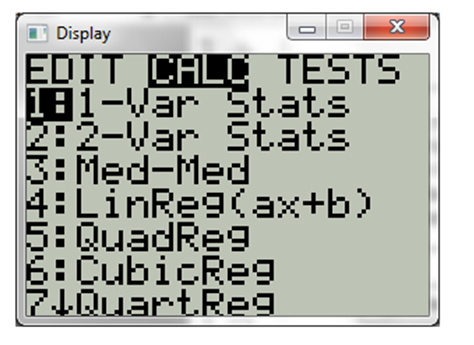
Now choose cubic reg. the display will be
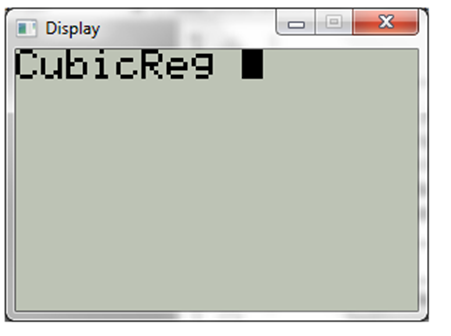
Now press enter. The display will be
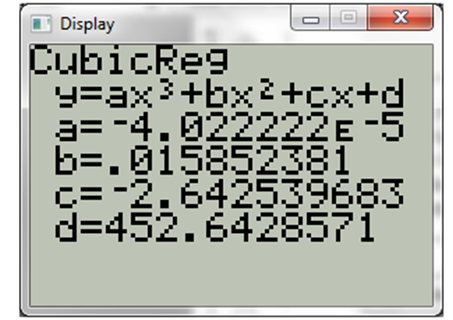
Hence the cubic regression model of the above data is
b.
Plot a utility graph.
b.
Answer to Problem 48E
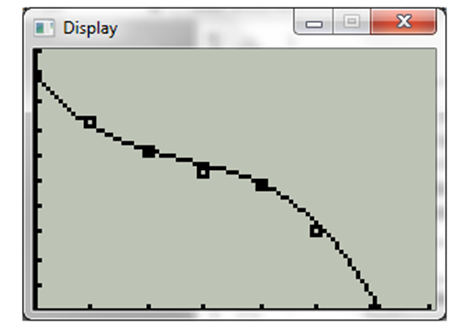
Explanation of Solution
Given information:
The table shows the measurements (in feet) of a lot bounded by a stream and two straight roads that meet at right angles (see figure).
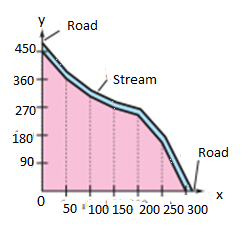
Use the graphing utility to plot the data and graph the model in the same viewing window.
Calculation:
Consider the following table
To plot the data, proceed as follows.
Press 2nd Y. The display will be
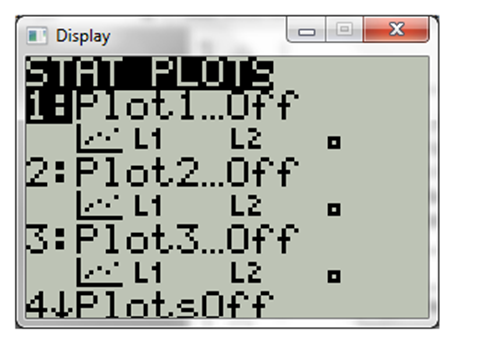
Now press enter and choose on. The display will be

Now press Window to choose the proper scale. The display will be
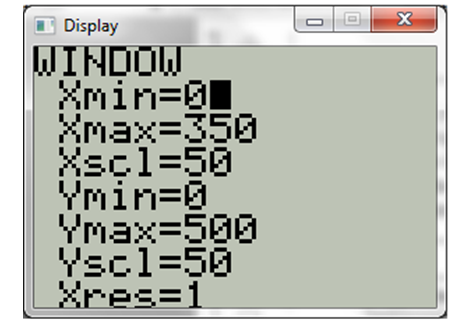
Now press graph, the display will be
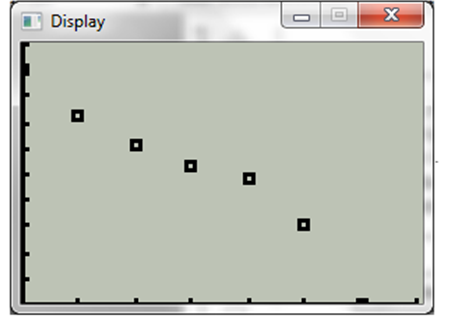
To plot the regression equation, proceed as follows.
Now press
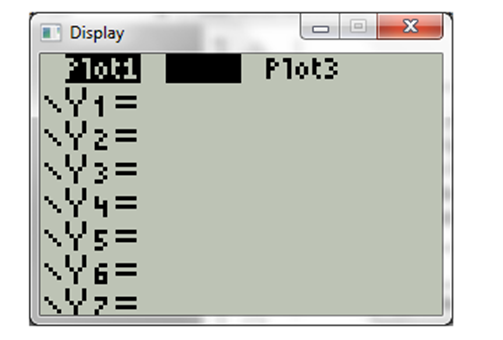
Now provide the equation, the display will be
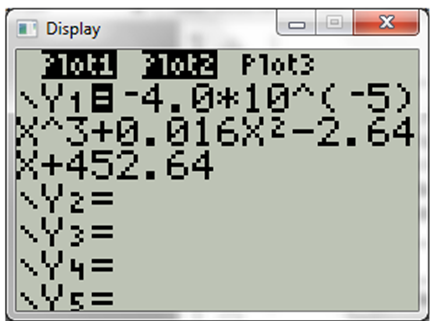
Now press graph, the display will be
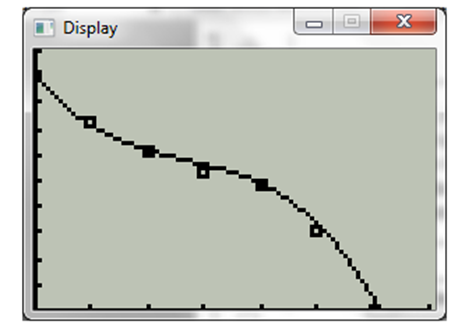
c.
Find the area of the lot.
c.
Answer to Problem 48E
Explanation of Solution
Given information:
The table shows the measurements (in feet) of a lot bounded by a stream and two straight roads that meet at right angles (see figure).
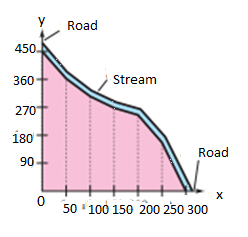
Use the model in part (a) to estimate the area of the lot.
Calculation:
Define the dimensions of the rectangles as follows:
Width:
Height:
Hence,
Now approximate the area as the sum of the areas of
Now use the properties of summations.
Now find the exact area by taking the limit as
Divide individually within the paranthesis
Now replace
Hence, the under the curve is
Chapter 12 Solutions
EBK PRECALCULUS W/LIMITS
- i attached the question and the way i solved it, i believe i made an error, could you point it out for me because the correct answer is 3pi/2correct answer is D, please see both attached photosarrow_forwardQuestion 3 and 4arrow_forwardcould you explain this using stoke theoremi already circled the correct answerarrow_forward
- can you explain why the answer is 1/3arrow_forwardThe position of a particle that moves along the x-axis is defined by x = - 3t^2 + 12^t - 6 f, where t is in seconds. For the time interval t = 0 to t = 3 s, (1) plot the position, velocity, and acceleration as functions of time; (2) calculate the distance traveled; and (3) determine the displacement of the particleshow the graph and write the solution with a penarrow_forwardThe position of a particle that moves along the x-axis is defined by x = - 3t^2 + 12^t - 6 f, where t is in seconds. For the time interval t = 0 to t = 3 s, (1) plot the position, velocity, and acceleration as functions of time; (2) calculate the distance traveled; and (3) determine the displacement of the particleshow the graph and write the solution with a penarrow_forward
- The answer for number 1 is D Could you show me whyarrow_forwardThe path of a particle moving in a straight line is given by s = t^3 - 6t^2+ 9t + 4, where s is in ft and t in seconds. a. Finds and a when v = 0. b. Find s and v when a = 0.show the graph if needed and write the solution with a penarrow_forwardfind the roots it may help to know b =1arrow_forward
 Calculus: Early TranscendentalsCalculusISBN:9781285741550Author:James StewartPublisher:Cengage Learning
Calculus: Early TranscendentalsCalculusISBN:9781285741550Author:James StewartPublisher:Cengage Learning Thomas' Calculus (14th Edition)CalculusISBN:9780134438986Author:Joel R. Hass, Christopher E. Heil, Maurice D. WeirPublisher:PEARSON
Thomas' Calculus (14th Edition)CalculusISBN:9780134438986Author:Joel R. Hass, Christopher E. Heil, Maurice D. WeirPublisher:PEARSON Calculus: Early Transcendentals (3rd Edition)CalculusISBN:9780134763644Author:William L. Briggs, Lyle Cochran, Bernard Gillett, Eric SchulzPublisher:PEARSON
Calculus: Early Transcendentals (3rd Edition)CalculusISBN:9780134763644Author:William L. Briggs, Lyle Cochran, Bernard Gillett, Eric SchulzPublisher:PEARSON Calculus: Early TranscendentalsCalculusISBN:9781319050740Author:Jon Rogawski, Colin Adams, Robert FranzosaPublisher:W. H. Freeman
Calculus: Early TranscendentalsCalculusISBN:9781319050740Author:Jon Rogawski, Colin Adams, Robert FranzosaPublisher:W. H. Freeman
 Calculus: Early Transcendental FunctionsCalculusISBN:9781337552516Author:Ron Larson, Bruce H. EdwardsPublisher:Cengage Learning
Calculus: Early Transcendental FunctionsCalculusISBN:9781337552516Author:Ron Larson, Bruce H. EdwardsPublisher:Cengage Learning





